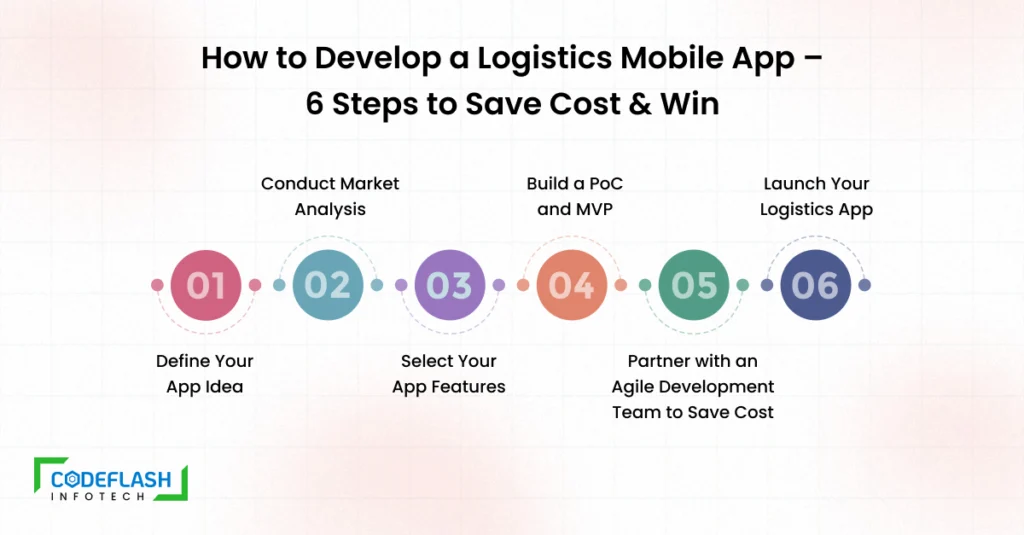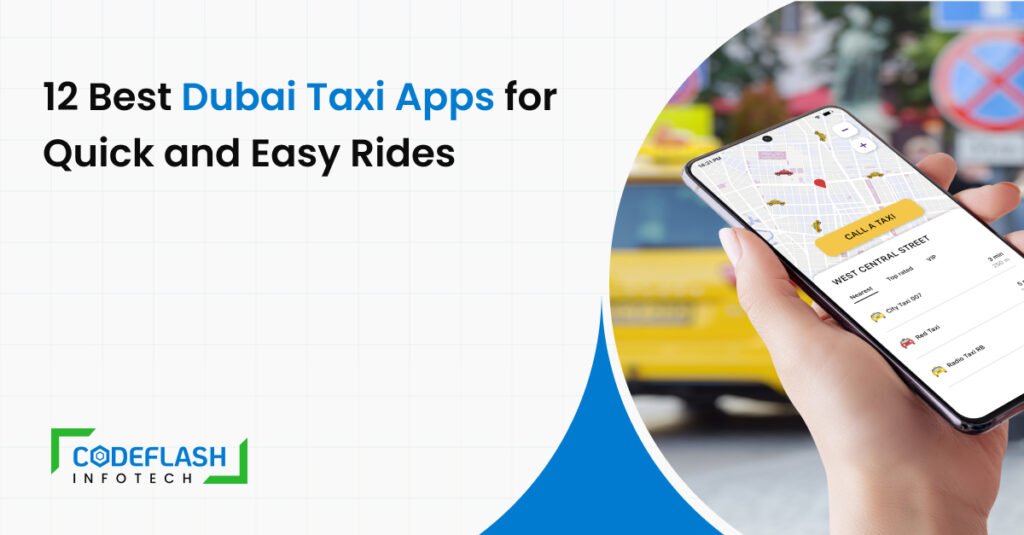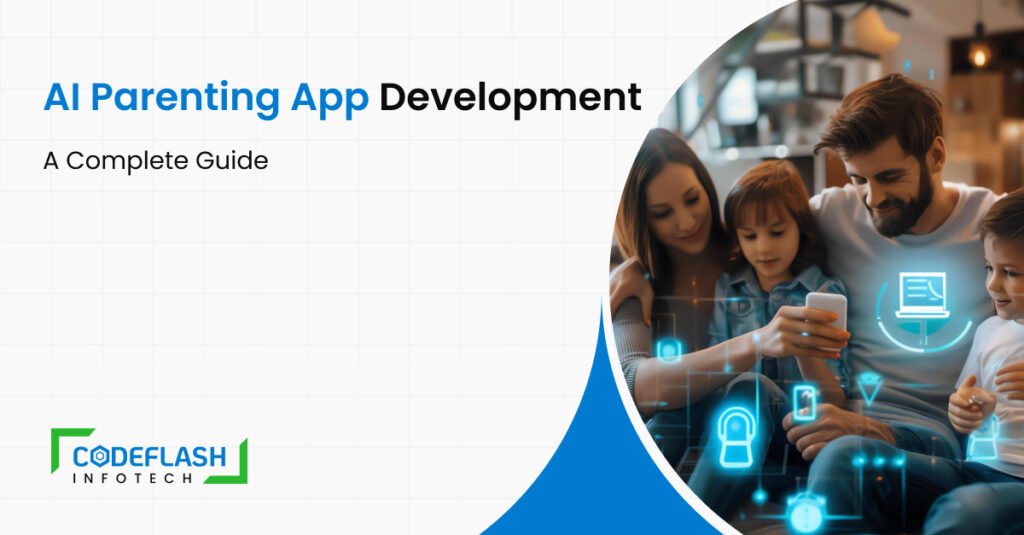
How to Develop a Logistics Mobile App Like Uber Freight? Cost and Features
24 NOVEMBER
The global logistics industry faced challenges due to the pandemic and other disruptions, but technology and logistics software development have been instrumental in solving these issues. Logistics apps improved transparency, leading to a $71.96 billion market size by 2026, with growth in the APAC region.
Despite the potential, limited competition in develop a logistics mobile app offers a promising opportunity for startups like Uber Freight. This blog provides a roadmap for launching a successful logistics app.
Why develop a logistics mobile app – Reasons and Benefits
Whether you’re a logistics company aiming to create a mobile app for in-house fleet management or looking to develop an On-Demand Mobile App, having the right software offers numerous advantages. It effectively addresses the complexities of logistics operations and offers a substantial revenue source.
High Demand and Revenue Potential
The global on-demand of Develop a Logistics App expands with eCommerce and rapid delivery demand. U.S. trucking, valued at $875.5 billion in 2021, is crucial for the economy. If you have ambitions to develop a robust, feature-packed, on-demand trucking app that caters to the needs of your target audience, the earning potential in this sector knows no bounds.
Efficient Fleet Management
Running a logistics business sans software or apps can take time and effort. Creating a bespoke fleet management application provides the advantage of consolidating all fleet-related data into a single platform, enabling data-driven decision-making.
Such an application facilitates timely vehicle maintenance, reducing the likelihood of technical issues, engine problems, brake malfunctions, and vehicle inspection hiccups. Moreover, it diligently tracks all aspects of your drivers, trucks, routes, locations, cargo types, availability, payload capacity, and other critical information, ultimately leading to enhanced control and profitability within your business.
No Paperwork Formalities
A logistics mobile app automates operations, minimizing paperwork. It facilitates a paperless workflow, from delivery tracking to e-billing, payment processing, and accounting. This saves time and money, grants quicker data access, and lets employees concentrate on vital decisions.
Therefore, you waste less money, and save time, and your employees get access to the data faster. Automation also helps them focus on other important decisions.

How to Develop a Logistics Mobile App – 6 Steps to Save Cost & Win
Creating and launching a mobile app is a substantial undertaking, demanding meticulous planning and strategy development to chart a path towards success. Subsequently, you must allocate resources for design and development, all while ensuring prudent financial management to avoid excessive expenditures. Below is a systematic guide to commence the process:
1. Define Your App Idea
When venturing into mobile app development, the first focal point should be a well-defined idea, crucial for successful execution and overall project success. Logistics mobile apps span various categories like fleet, on-demand, and warehouse management. It’s important to categorize your idea precisely, highlighting the need for a clear concept.
Two potential scenarios for logistics mobile app development involve creating a platform to connect carriers with shippers on a regional or city-specific scale or managing a logistics business with its fleet, resulting in an app aimed at streamlining or expanding operations. Your concept may also deviate from these models. Regardless, articulating the app’s goals is the initial step, crucial for outlining its business model and features before diving into development.
Take Uber Freight as an example—it operates as a marketplace connecting shippers with nearby carriers sans its fleet.
2. Conduct Market Analysis
Developing a mobile app without conducting comprehensive market research is like building a house without a blueprint—an invitation to potential instability and failure to meet expectations. Throughout history, mobile app startups, particularly in the ride-sharing sector (similar to Grab), have experienced success in one market but often required additional market research when expanding into new territories. If you’re curious about the costs of developing a ride-sharing app like Grab, you can find detailed information in our blog posts.
To avoid such pitfalls, prioritizing comprehensive market research is imperative. This research equips you with valuable insights into:
- Industry trends.
- The issues that your target demographic encounters.
- The psychology and preferences of potential consumers.
- Comprehension of the strengths and weaknesses of your competitors.
The next logical step involves:
- In-depth engagement with potential users.
- Constructing detailed user personas.
- Striving to comprehend their needs, challenges, and preferences.
Furthermore, a close examination of your competition in the market is essential. By identifying areas where your competitors fall short, you can shape those deficiencies into your unique selling points (USPs) and establish a strong presence in the market. Surveys and direct interviews with your audience can be invaluable tools for gaining deeper insights.
3. Select Your App Features
Now, apply your research findings to actionable steps. Based on your research findings, identify and compile a list of the pain points your end-users are experiencing, then convert these challenges into the features your app will offer.
For example, if your research reveals that your end-users struggle with warehouse product management, develop a feature that simplifies this process using barcodes or database-stored numbers. This feature can boost productivity and streamline operations. When developing an on-demand trucking solution, prioritize user-friendly fleet-finding.
4. Partner with an Agile Development Team to Save Cost
When you’ve determined the type of app you want to create and define its features, the next crucial step is selecting the right logistics app development partner. To ensure successful development, it’s highly advisable to collaborate with an experienced Agile Development agency. This partnership ensures the delivery of a high-quality solution within set timelines. The approach you adopt in the mobile app development process can be the linchpin of your app’s success or downfall. By embracing agile development methodologies and enlisting a development team proficient in the necessary technologies, you secure several benefits, including:
- Faster Time to Market
An agile team possesses the agility to swiftly respond to changes and roll out new features within tight timeframes, a crucial advantage in the ever-evolving logistics sector. Embracing agile development principles allows you to expedite the launch of your logistics app, enabling you to gather valuable customer feedback that can be promptly incorporated into subsequent iterations.
- Transparent Development Process
For business owners, achieving peace of mind hinges on having a comprehensive grasp of task ownership, tracking progress, and anticipating what lies ahead in the next release. Consistent and open communication facilitates This level of clarity, a foundational tenet of agile methodologies.
- Adequate Budget
Agile development methodologies prove cost-effective by averting resource allocation to potentially unnecessary features, often stemming from UX issues—the process of swift prototyping guarantees that developers concentrate their efforts solely on validated features. Moreover, customer feedback is pivotal in enhancing the solution’s overall quality.
- Easy Maintenance
DevOps stands as a central component within the agile methodology. It relies on automation processes to transform code into a fully operational application. Simultaneously, DevOps tools offer invaluable insights into the app’s performance, simplifying the maintenance process. The agile software development methodology further enhances workflow efficiency by permitting concurrent execution of multiple steps. These steps encompass design, development, testing, and deployment, all capable of proceeding simultaneously once the initial MVP version of the app is launched. For instance, designers can concentrate on future iterations, developers can introduce new features, testers can meticulously identify issues, and DevOps engineers can closely monitor the app’s performance all in parallel, ensuring a streamlined and agile development process.
5. Build a PoC and MVP
The critical phase involves validating your business concept after securing a proficient mobile app development company. The initial steps entail crafting a Proof of Concept (PoC) and developing a Minimum Viable Product (MVP). This process necessitates collaborative research with your app development partners to ascertain the feasibility of your app’s technological requirements and potential enhancements through minor adjustments. This stage is pivotal in safeguarding your investments and efforts from potential wastage. With the PoC in hand, you can then build an MVP, which encompasses the fundamental features of your app. Subsequently, you can execute a soft launch of the MVP, actively gathering user feedback, both positive and negative. This valuable input is the foundation for making necessary alterations and enhancements, ultimately shaping the final product.
6. Launch Your Logistics App
Launching your logistics mobile app is a pivotal phase, marked by meticulously orchestrated steps. Once the app has undergone thorough testing, it is ready for deployment on the appropriate app stores. Equally critical is establishing a robust Mobile App Marketing Strategy designed to promote the app and boost its visibility. Continuously gathering user feedback is paramount, refining the app’s features and functionalities and ensuring its enduring relevance and utility for users. By adhering to these guidelines, a logistics app can be successfully launched, sustained, and enhanced over time.
Wrapping Up
In summary, Developing logistics mobile apps has brought a transformative shift in the logistics industry, introducing transparency, efficiency, and automation to supply chain operations. The potential within the logistics mobile app market is vast, presenting a lucrative opportunity for those ready to venture into logistics app development. develop a logistics mobile app akin to Uber Freight involves six key steps.
These encompass defining your app concept, conducting thorough market analysis, selecting the app’s features, assembling an agile development team, constructing a Proof of Concept (PoC) and Minimum Viable Product (MVP), and ultimately launching your logistics app. By adhering to this structured approach, you can economize your resources and craft a successful logistics mobile app that caters to the needs of carriers, shippers, and logistics business owners.
In the broader context, logistics mobile apps are becoming indispensable tools for logistics industry players, and wise investments in this technology, alongside dependable Logistics Mobile App Development Partners, can lead to substantial growth and achievements.





